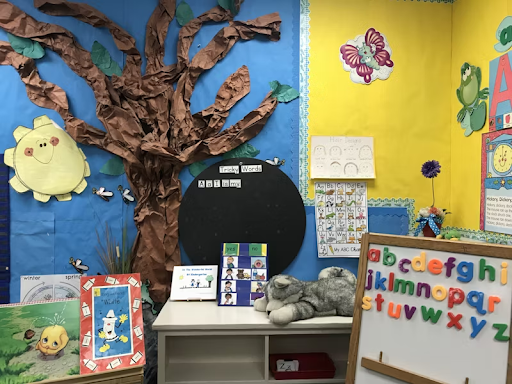Workplace Transformative Learning: A Sure Catalyst for Positive Organizational Change

The application of workplace transformative learning as a catalyst for organizational change is examined in this post.
Your company is undergoing a significant conversion. The organization will implement a new ERP system. There are discussions about destroying silos and establishing a solitary source of truth. Employees fear that they may lose their jobs as a result of a system that promises effectiveness, openness, and a third “ncy” that no one can recall.
Everyone will be required to become familiar with the new system; else, they will be free to look for employment elsewhere. Everything sounds terrible, really awful. The responsibility for creating the new system’s training falls on your learning and development team. It’s difficult. It hasn’t been seen yet.
You are concerned since 37% of the workforce has worked for the business for 10 years or longer and uses desktop programs like Word, Excel, and PowerPoint to keep track of everything from inventory to safety information.
Information in the corporation is highly compartmentalized and a source of personal power. They won’t be open-minded students. How will you respond?
Transformative Learning Theory: Do You Know About It?
With the recent emphasis on diversity and inclusion brought on by Me Too, Black Lives Matter, and other social movements that demand that society and our workplaces reflect and respect a wide variety of ethnicities, beliefs, and lifestyles, transformative learning theory has gained a lot of attention in the workplace.
Reflective contemplation about attitudes and relationships with other people seems to be made for the collaborative, community-based learning style of transformative learning. In order to modify learners’ perspectives, transformative learning aims to induce a change of heart. But is the idea applicable to developing different kinds of learning opportunities at work?
The originator of transformative learning, Jack Mezirow, coined the term and defined it as
an orientation which thinks that the way learners interpret and reinterpret their sense experience is fundamental to producing meaning and consequently learning.
It is a psycho-critical constructivist method of learning that focuses on how people acquire knowledge by tearing apart and reassembling their presumptions and beliefs in order to give them new meaning.
Although it was not designed with workplace learning in mind, transformational learning did address many of the schemata changes—that is, reorganizing and reflecting—that are required to successfully navigate change.
Research on workplace transformative learning is scarce. But there is a compelling case to be made for workplace transformative learning as a crucial component of a successful change management initiative.
Also read: What E-Learning Experts Must Know About Transformative Learning Theory
The Process of Workplace Transformative Learning
A perplexing encounter serves as the foundation for transformative learning in organizations. The basis of workplace transformative learning is this: an incident that questions a person’s presumptions about their beliefs, personal schemata, or their role in the world is referred to as a disorienting encounter or dilemma.
As automation entered the manufacturing process in the 1980s, there were a lot of significant layoffs in the American automotive industry. The industry’s “my way or the highway” mentality severely damaged people’s careers, families, and communities. The American manufacturing industry is still feeling the effects of this strategy.
The stages of transformational learning can be divided into four groups based on their processes: experience, critical reflection, reflective discourse, and action. We are tempted, as instructional designers, to concentrate on the action phase.
Be mindful of the social and emotional components of transformation, since they are essential to the experience, critical analysis, and reflective dialogue. Additionally, it offers a chance to comfort and validate students, giving them a sense of agency over their education.
Transformative learning aims to build a collaborative learning environment and meet learners where they are. A community handling change instead of a single person facing a perplexing situation. The ideal strategy for teaching in a hostile atmosphere involves making employees feel engaged in the learning process rather than seeing them as enemies. Learners are assisted in changing how they view themselves and their circumstances via objective reframing and cognitive realignment.
The 10 phases of transformative learning.
In the transformative learning theory there are typical phases that adult education learners follow. These phases are key in helping adult education learners transform their prior notions as they get new information and insight.
1. A disorienting dilemma.
A disorienting dilemma is a situation where a learner finds that what they thought or believed in the past may not be accurate. This is the first part of transformational learning. This can be an “a-ha” moment where a student hears or consider something they may not have understood before. This disorienting dilemma can be uncomfortable or challenging for students, but is the key spark in starting a fire of transformational learning.
2. Self-examination.
After a disorienting dilemma, students will do a self-examination of their beliefs and understanding. They will think about their past experiences and how they connect to this disorienting dilemma. This can create a perspective transformation, where students understand that their perspective may not be the only perspective.
3. Critical assessment of assumptions.
Students in this phase of transformational learning are able to take a more comprehensive look at their past assumptions and review them critically. They are able to accept that perhaps some of their past assumptions were wrong, and are thereby more open to new information and thoughts. This creates perspective transformation as they are able to look with more unbiased eyes at their own past.
4. Planning a course of action.
After students understand how their past assumptions and beliefs may have been wrong and have a perspective transformation, they are able to plan a course of action. They are able to consider what kinds of learning they will now need to more fully understand a problem or situation. They will be able to have a strategy for learning new things, seeing new perspectives, talking to new people, and more.
5. Acquisition of knowledge or skills to carry out new plan.
Now is the time for students to carry out their plan and get further in their transformational learning. They may have to learn new things and consider different perspectives in order to fully enhance their learning. This may take extensive work and effort, but this is where the real learning is happening.
6. Exploring and trying new roles.
As part of transformational learning, we need to act. In transformative learning, exploring and trying to understand changes is key to success. It goes beyond just learning about something, but actively working to understand and experience new things for yourself.
7. Building self-efficacy in new roles and relationships.
Self-efficacy involves us being able to make our own decisions and have our own beliefs. As we follow transformative learning phases it’s extremely important to build confidence in our beliefs and understanding, and to continue to practice this transformative cycle as we move forward.
8. Trying out the plan
It is where the real learning happens as individuals carry out their plan further in their transformational learning. It takes work and a lot of effort to learn new things and consider new perspectives.
9. Development of competence and self-confidence in new roles
The key to success in transformational learning is an exploration and trying to understand all the changes. It is beyond regular learning but actively working on getting new experiences.
10. Reintegration into life on the basis of new perspectives
These phases allow individuals for their successful integration into life on the basis of new perspectives because people develop an implementation plan. They gain the knowledge and skills needed for this plan.
Putting transformative learning theory into practice.
As an educator it’s important to help students learn using different kinds of learning strategies. The transformative learning theory can be especially important for older students to be able to grasp new ideas and concepts. There are many ways that educators can introduce this kind of learning into their classroom, including:
Give students chances to learn about new perspectives.
Teachers can provide an action even or disorienting dilemma inside their classroom. A picture, story, demonstration, or guest that doesn’t quite meet what they’ve understood can help do this. For example, students can learn about different political parties by actually meeting political candidates. They may have certain beliefs about government, but meeting a candidate who is kind and passionate about different viewpoints could be an action event for them. Similarly, teachers can introduce diverse authors and literature into the classroom, helping students see things from a perspective that isn’t like their own.
Help students identify and question their assumptions.
In the classroom it’s important for students to critically analyze their assumptions. Teachers can model this behavior by sharing stories of how their own understanding and perspectives have shifted, how they have been able to analyze their own beliefs, and more. Teachers can give journal questions that help students by giving questions that they can ask about their own assumptions, give opportunities for students to share, and provide writing and reflective time for students to analyze.
Create opportunities for critical discourse.
In a classroom that is focused on transformative learning, there must be opportunity for critical discussions. Teachers can help students have these critical discussions by providing space for conversation, helping students create pro and con lists of literature or articles, giving students opportunity for debate, or requiring students to prepare both sides of a debate to understand how there are multiple perspectives always at play. Additionally, small group discussions and activities can help students with this critical understanding. This kind of classroom work can help students really embrace other thoughts and experiences different from their own.
Transformative learning examples.
There are many ways that educators can use transformative learning in their classroom. For example, when students are learning about world religions, teachers can introduce literature and articles that discuss different religions, helping them gain new perspectives and understanding. Additionally, teachers can give students an assignment to go and interview different people about their perspectives on a historical event. This helps students get many points of view and perspectives. Another way teachers can use transformative learning in the classroom is to give students contrasting articles on a topic, and ask them their thoughts and insights on the different elements of each article. This helps them to question their own understanding and move through the process of learning.
Recommendations for Instructional Designers
The ID’s primary concern should be engagement. If your company has a change management team, you will need to collaborate closely with them to do this. If not, now is a great moment to learn about change management and begin making efforts to include it in the instructional process.
Therefore, when a new ERP system is introduced, the key concern isn’t how to teach everyone about it. Find out what your audience is asking first.
Why is this important to me?
How does this benefit me?
Does the business believe I’m not doing a good enough job if this is happening?
Don’t shy away from these queries. Find them and involve workers.
In addition to teaching crucial skills, training provides an opportunity for dialogue with managers, supervisors, and individual contributors.
As ID professionals, we have the power to create a culture of change that encourages people to stand up for themselves and take control of their futures.
It’s an opportunity to clarify the why as well as the how and to assist staff in redefining who they are and what they do in a brand-new, uncharted context.







